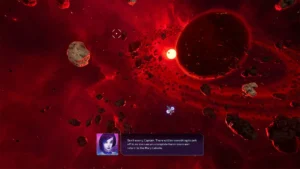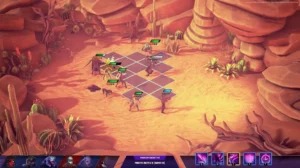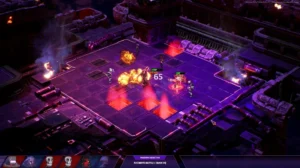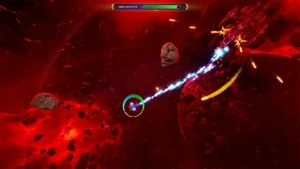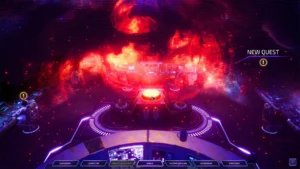
Subverse review
Explore the unique blend of strategy, space combat, and narrative in Subverse
Subverse is a distinctive game that combines tactical RPG elements with fast-paced space shooter action, set in a richly crafted sci-fi universe. Known for its mature themes and engaging story, Subverse invites players to command a spaceship, recruit a diverse crew, and engage in strategic battles across the galaxy. This article will guide you through the core gameplay features, narrative depth, and character dynamics that make Subverse a standout title for fans of both strategy and narrative-driven games.
Exploring Subverse Gameplay: Tactical Combat and Space Shooter
Ever jumped into a game expecting one thing and being utterly delighted to find it’s actually two incredible experiences in one? 🤯 That was my exact feeling when I first dove into the Subverse tactical combat system. I’ll admit, I initially booted it up for the, ahem, other reasons we all know about. But I quickly found myself completely hooked on the surprisingly deep and strategic gameplay. Subverse masterfully blends two distinct styles: a thoughtful, grid-based tactical showdown and a heart-pounding arcade space shooter. It’s this unique fusion that keeps you on your toes, constantly switching your brain between careful planning and reflex-driven action.
Let’s break down how these two halves create a whole that’s far greater than the sum of its parts. Whether you’re a strategy veteran or a shoot-’em-up fan, understanding the Subverse combat mechanics is key to dominating the galaxy.
What Makes Subverse’s Tactical Combat Unique?
Forget everything you know about simple turn-based fights. The Subverse tactical combat system is a devilishly clever puzzle disguised as a battle. You’re placed on a grid with your crew, facing down waves of enemies, and it’s all about positioning and timing. What really sets it apart is the reinforcement system. Enemies don’t just sit there; they pour onto the grid from specific points each turn. If you don’t manage these reinforcements, you can quickly find yourself surrounded. I learned this the hard way in an early mission, thinking I could just bulldoze through. I ended up with my back against the wall, literally, as a fresh wave of baddies spawned right behind me! 😅
The core of your Subverse grid combat strategy revolves around controlling the battlefield. You need to anticipate where the next wave will appear and either block the spawn points or position your team to hit them the moment they materialize. This adds a fantastic layer of pre-planning to every encounter. It’s not just about who you attack, but where you end your turn.
Pro Tip: Always end your moves by positioning your crew to cover enemy reinforcement points. Controlling the flow of battle is half the victory!
But it doesn’t stop there. Another critical layer is attack timing. Each ability has a wind-up period, and executing an attack at the right moment can mean the difference between a hit and a devastating miss. This isn’t a simple “click to attack” affair; you need to think a move or two ahead, much like in a game of chess. Mastering these Subverse combat mechanics is incredibly rewarding. When you perfectly set up a chain of attacks that wipes out an entire wave before they even get a turn, it feels absolutely brilliant. ✨ This is the essence of how to play Subverse combat on the tactical grid: be proactive, not reactive.
How Does the Space Shooter Segment Work?
Just when you’ve settled into the strategic rhythm of grid combat, Subverse throws you into the cockpit for some pure, unadulterated arcade action. The Subverse space shooter gameplay is a fantastic change of pace, splitting into two exciting modes. The first is a classic vertical scroller where you dodge waves of enemy fire, and the second is a side-scrolling barrage that really tests your reflexes. But my favorite part? The free-roaming segments. 🚀
In these open areas, you’re not just flying on a rail. You have full control to zip around asteroid fields, duck behind space debris for cover, and hunt down specific targets. Using the environment is crucial; a well-placed asteroid can save you from a hail of laser fire. The shift from methodical grid strategy to the twitch-based demands of the Subverse space shooter is jarring in the best way possible. It keeps the gameplay fresh and ensures you’re never doing one thing for too long.
To make the differences crystal clear, here’s a quick breakdown:
| Feature | Tactical Grid Combat | Space Shooter Gameplay |
|---|---|---|
| Primary Focus | Strategy & Positioning | Reflexes & Aim |
| Perspective | Top-down Grid | Third-person or Side-view |
| Pacing | Turn-based, Methodical | Real-time, Fast-paced |
| Key Mechanic | Reinforcement Wave Management | Environmental Cover & Dodging |
This seamless switching between gameplay styles is a hallmark of the Subverse experience. You might be planning a perfect flank on the grid one minute, and the next, you’re weaving through a meteor shower, lasers blazing. 🌠
Integrating Crew Abilities into Combat
This is where the magic truly happens. The Subverse tactical combat and Subverse space shooter gameplay aren’t separate islands; they’re bridged by your crew. Each member of your team brings a completely unique set of skills to the table, and learning to leverage their Subverse waifu abilities is the key to mastering the game.
In the grid-based battles, these abilities define your strategy. You might have one character who excels at area-of-effect attacks, perfect for clearing out clustered enemies or blocking a reinforcement point. Another might be a specialist in single-target damage or healing. I remember a tough boss fight where I was struggling until I started using a specific character’s teleport ability to reposition my team instantly, completely turning the tide of battle. 🤝 It’s all about finding synergies between your crew’s kits.
These Subverse waifu abilities are just as vital in the Subverse space shooter segments. When you’re in your ship, you can activate powerful special attacks that are tied directly to your crew. One might unleash a massive screen-clearing blast, while another could deploy a temporary drone for backup. Timing these abilities correctly during a hectic shooter section can save you from destruction or help you melt a tough enemy flagship.
Here’s a quick look at how abilities translate across modes:
- Grid Combat: Abilities are tactical tools for controlling space, dealing damage in patterns, and supporting your team.
- Space Shooter: Abilities become powerful “super moves” that you charge up and unleash for maximum impact.
Understanding this integration is the ultimate Subverse grid combat strategy and the best advice for how to play Subverse combat effectively. Your crew isn’t just for show; they are the variable that allows you to tailor your approach to every single challenge the game throws at you. By mastering both the Subverse combat mechanics on the ground and in the stars, and weaving your crew’s unique talents throughout, you’ll find a deeply engaging and satisfying loop that is uniquely Subverse. 🏆
Subverse offers a compelling mix of tactical strategy and dynamic space shooter action, wrapped in a rich sci-fi narrative. Its unique gameplay mechanics, combined with diverse crew abilities and a story-driven approach, create an engaging experience for players seeking both challenge and immersion. Whether you enjoy strategic planning or fast-paced combat, Subverse delivers a memorable journey through the Prodigium Galaxy. Dive in and command your crew to shape the fate of the galaxy.



